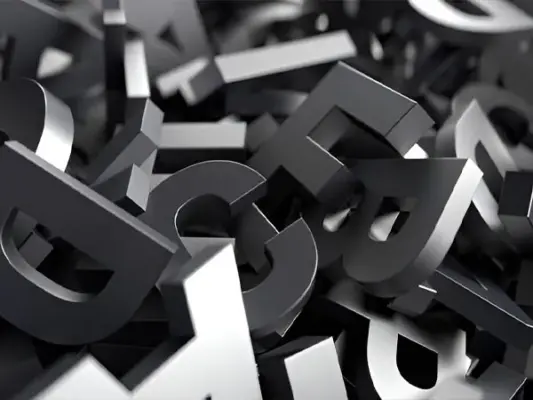
The world of typography, the art of arranging type to make written language legible, readable, and visually appealing, has undergone significant transformation with the advent of artificial intelligence (AI). This blog delves into how AI is reshaping typography, enhancing creativity, and optimizing design processes.
The Evolution of Typography with AI
Historically, typography has been a meticulous process involving manual typesetting and careful design. With digital advancements, designers began using software to create and manipulate typefaces more efficiently. Now, AI is taking typography to the next level, automating complex tasks, and opening new creative possibilities.
AI-Driven Typography Design
One of the most exciting developments is AI’s ability to generate new typefaces. AI algorithms can analyze thousands of existing fonts, learning the intricate details of each character. By understanding these nuances, AI can create unique typefaces that retain human-like creativity and precision.
Examples of AI-Driven Typography Tools:
– Adobe Sensei: Integrated into Adobe’s suite, Sensei uses AI to suggest fonts that match the style of a project, saving designers time and effort.
– Font joy: This tool uses deep learning to generate font pairings, helping designers find harmonious combinations quickly.
Enhancing Readability and Accessibility
AI is not just about creating new typefaces; it’s also enhancing readability and accessibility. By analyzing user data, AI can adjust typography to suit different audiences and contexts. For instance, AI can recommend font sizes and styles that are easier to read for people with visual impairments, ensuring inclusivity in design.
AI Applications in Accessibility:
– Adaptive Text: AI can adjust text size and spacing in real-time based on user preferences and environmental conditions.
– Readable: An AI tool that evaluates the readability of text and suggests improvements to make it more accessible to a broader audience.
Optimizing Workflow and Efficiency
Typography involves numerous repetitive tasks, such as kerning (adjusting the space between characters) and leading (adjusting the space between lines). AI-powered tools can automate these tasks, allowing designers to focus on the creative aspects of their work.
Workflow Optimization Tools:
– Kern.ai: Uses AI to automatically adjust kerning, ensuring perfect spacing between characters.
– Prototype: An AI-driven tool that allows designers to customize fonts quickly, automating adjustments that would otherwise be time-consuming.
Personalized Typography
Personalization is becoming increasingly important in marketing and user experience design. AI can create personalized typographic experiences by analyzing user behavior and preferences. For example, AI can adjust the typography of a website based on the user’s reading habits, creating a more engaging experience.
Personalization Examples:
– Dynamic Fonts: AI can change fonts on a website in real-time to match the user’s preferences, making the content more appealing.
– Custom Branding: AI can generate unique typefaces for brands, ensuring that their typography stands out and resonates with their target audience.
The Future of AI in Typography
The intersection of AI and typography is still in its early stages, but the potential is enormous. As AI continues to evolve, we can expect even more sophisticated tools that not only enhance the creative process but also make typography more accessible and user-friendly.
Future Trends:
– AI-Assisted Creativity: AI will increasingly become a co-creator, assisting designers in exploring new typographic styles and concepts.
– Real-Time Adaptation: Typography that adapts in real-time to user interactions and environmental factors will become more common, providing personalized reading experiences.
Conclusion
The integration of AI in typography is revolutionizing the way we create and interact with text. From generating new typefaces and enhancing readability to optimizing workflows and personalizing user experiences, AI is transforming typography into a more dynamic and accessible field. As we continue to explore this intersection, the future holds exciting possibilities for designers and users alike.